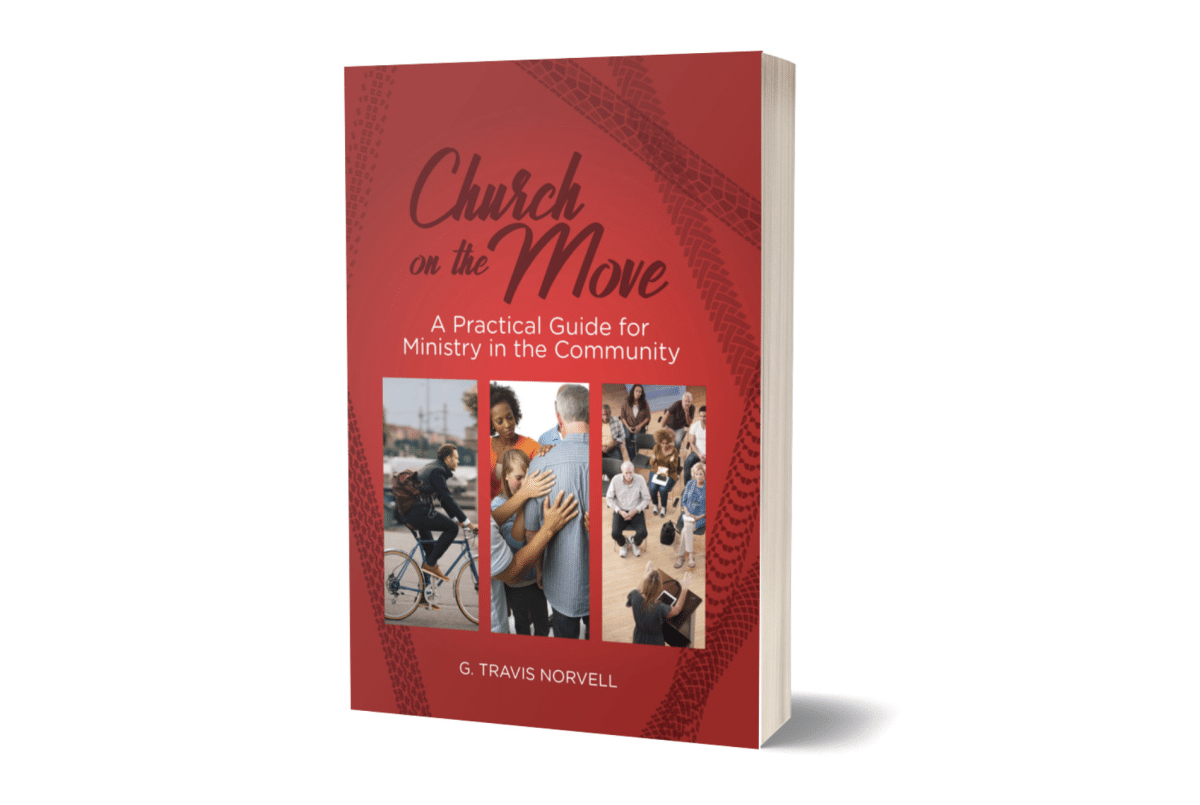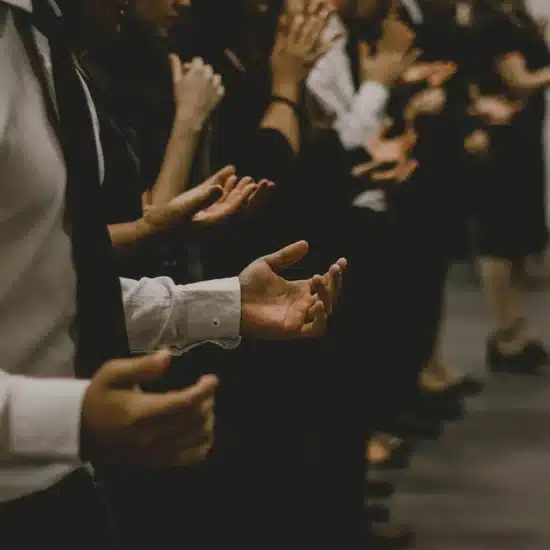

CHURCH ON THE MOVE: A Practical Guide for Ministry in the Community. By G. Travis Norvell. Valley Forge, PA: Judson Press, 2022. Xviii + 108 pages.
Churches and religious institutions can easily become insulated from the surrounding world. They create bubbles or silos by turning inward, seeking to protect whatever space they have accumulated over the years. The future becomes increasingly uncertain as the world speeds up (see the books by Andrew Root regarding that matter). Many smaller churches are especially caught up in survival mode, fearing the realities of what they perceive to be a hostile world. So, they hunker down hoping to survive.

Robert D. Cornwall
As for an answer to the questions of the day, there are many possible answers. Books get written every year offering guidance, and yet the decline continues, and the churches feel ever more irrelevant to the concerns of the world around them. When we consider possible solutions, we discover that there is no one-size-fits-all solution. Each congregation lives in its own context. Thus, a rural context is different from a suburban one, and a suburban one is different from an urban one. tuned in that direction. So, what is the answer? The truth is, there is no one answer to every question or concern. Every congregation lives in a different context. A suburban context is much different from an urban or a rural one. Nevertheless, while all of this is true, we can learn from the experiences of others always being aware that the situations we face are different.
Travis Norvell’s book Church on the Move offers us one possible answer to how the church might move forward. The book’s title is intriguing. The same is true of the cover, which features a man riding a bike. That should serve as a clue to what is found inside. The subtitle suggests that this is “a practical guide for ministry in the community.” In other words, this is a book about getting out of the building or at least using the building for ministry that engages the large community.
Norvell is the pastor of Judson Memorial Baptist Church in Minneapolis. He also teaches at United Theological Seminary of the Twin Cities. His church, which is affiliated with the American Baptists, is situated in an urban area, not far from where George Floyd was murdered by a police officer. Part of the goal of this book is to demonstrate how social justice and church renewal can go hand in hand.
I read the book from the perspective of a retired mainline Protestant pastor who served a small suburban congregation that has roots in the city and draws its members from across a metropolitan area. In other words, my recent experience has been with a congregation that had never developed an identity as being a neighborhood congregation. In other words, I was not in a position to use a bike as part of my ministry. While Norvell lives and ministers in a city that is known for cold winters, he discovered that it is possible for a small congregation to become intimately involved in the life of the community. In his case, that involvement started with him riding a bike to work and worship. While, as I noted, the weather in Minneapolis is not balmy in the winter, nevertheless, Norvell invited his congregation to join him in riding to worship, or if not riding a bike, walking, or riding public transit. Of course, that is not always possible, but in an urban area, it can be possible (if the city has an effective public transit system).
With the above example in mind, Norvell invites us to consider what it means to be a Church on the Move. He proposes that the church might metaphorically promote “movement into the neighborhood/parish as a way to reconnect with neighbors and renew church mission and ministry” (p. xvii). Part of his message here is that a church needn’t have a big parking lot to thrive, countering a message one of his predecessors at Judson had promoted. Perhaps there are other ways to thrive, and with that in mind, he ponders whether a big parking lot actually separates a congregation from its neighbors.
Norvell began to ponder the questions that form the foundation of this book after his car broke down and he faced the question of whether to replace it. As he pondered that question, he discovered that his parish is quite bikeable. In examining his context, he realized he lived less than three miles from the church and that most of his trips were less than three miles in length. That made his ministry rather bikeable. This discovery led to a further evaluation of his neighborhood and its connection to the church. His reflections on the nature of his neighborhood (chapter 1) lead to an extended reflection on parking and how parking lots function in the life of a church. He notes that parking lots are designed for temporary storage. In other words, they may lie empty for much of the week. So, perhaps a church doesn’t need one or it can be utilized differently. One idea he offers up suggests using the parking lot as the location of a community garden using straw bales as the foundation. It’s an intriguing conversation that raises again the connection of a congregation to its neighbors. He offers a variety of possibilities for how churches can become less dependent on parking lots/spots. Even many smaller congregations in the suburbs may have a large parking lot built for a different era and so a portion could be used for such an offering to the community while still providing parking for the gathered church.
Now, this isn’t just a book about biking and parking. Norvell also addresses staffing. He reminds us that there likely are gifted people within the congregation who can provide the kind of leadership the congregation needs without hiring additional clergy. He shares stories of how his congregation discovered just the right people already present in the pews that enabled the congregation to extend its ministry. He discusses ways in which the building can be better utilized in service to the community. Of course, there’s the question of money and how it is used (chapter 3).
You might think having a car would be a time-saving device, but perhaps not. At least that’s a discovery Norvell made as he began to do ministry from his bike. In his case, he discovered that he could utilize biking in double-duty ways. Thus, if you’re biking, you’re probably getting your daily exercise so that’s one thing off the list. You don’t have to go to the gym. He also reflects on the concept of slow church that Chris Smith and John Pattison explored in their book Slow Church: Cultivating Community in the Patient Way of Jesus. Maybe there is value in slowing down. In thinking about ways in which the church can be present in the community, he notes that using a local coffee shop as an auxiliary office allows the pastor to be more available to the larger community.
There is risk in all of this, so the question concerns whether the church and its leadership is willing to embrace the risk posed by the solutions offered by Travis in Church on the Move. Norvell recognizes that what he proposes is risky. He recognizes that building a parking lot or relocating to the suburbs has been the recommended means of renewing the church. However, as some of us already know, having a parking lot in a suburban community on a busy street doesn’t guarantee success. So, are we ready and willing to take risks that might lead to renewal and ministry in the community?
Church on the Move is a brief, readable, thought-provoking book that might not solve everyone’s problems. After all, contexts are different and not everything suggested will work in every situation. However, even if that’s true we can learn from what Travis Norvell discovered in his ministry in Minneapolis. If nothing else, it challenges us to examine our context and consider how the church can be present in the community. Since this is a practical guide that Norvell hopes congregations might make use of as they consider their future, he includes discussion questions at the end of each chapter. He also includes a set of suggested readings that might be useful in extending or deepening the discussion. Something you might not expect in such a guide, Norvell adds recipes to each chapter that he believes might help empower the work of the church in the community. So, if you are involved in church life and you’re ready to take some risks that enable ministry in the community, I believe Church on the Move is a book for you to engage with.
This review originally appeared on BobCornwall.com.
Robert D. Cornwall is an ordained minister in the Christian Church (Disciples of Christ). Now retired from his ministry at Central Woodward Christian Church (Disciples of Christ) of Troy, Michigan, he serves as Minister-at-Large in Troy. He holds a Ph.D. in Historical Theology from Fuller Theological Seminary and is the author of numerous books including his latest books: Called to Bless: Finding Hope by Reclaiming Our Spiritual Roots (Cascade Books, 2021) and Unfettered Spirit: Spiritual Gifts for the New Great Awakening, 2nd Edition, (Energion Publications, 2021). His blog Ponderings on a Faith Journey can be found at www.bobcornwall.com.






